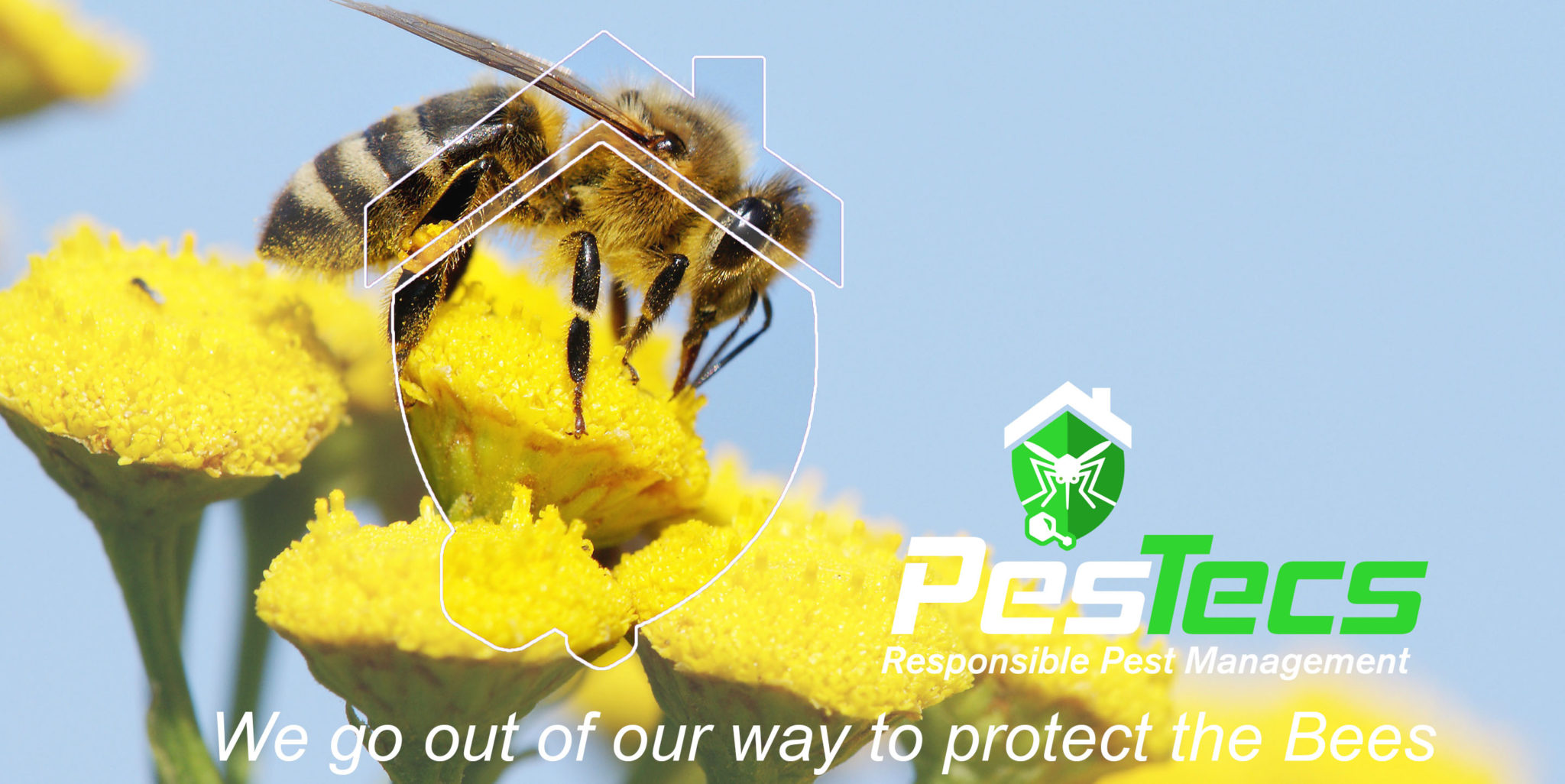Bee Careful
Posted on February 20, 2017 by admin

PesTecs is very concerned with declining bee populations, and we have designed our workday around minimizing the negative effects of pesticides on bees.
The State of Connecticut, through the Department of Energy and Environmental Protection, puts out a lot of good information on how to protect bees from the effects of pesticide use. PROTECTING HONEY BEES FROM PESTICIDE POISONING by ROGER G. ADAMS and CANDACE BARTHOLOMEW gives the following guidance, “Apply pesticides when bees are not actively foraging. Honey bees are active primarily during the morning and early afternoon. Many pesticides can be effectively applied in the late afternoon or evening with relative safety to bees.”
Bifenthrin is the active ingredient in Talstar and is a common insecticides used in mosquito and tick treatment programs. Bifenthrin belongs to a class of chemicals called Pyrethoids which are widely used in a variety of pest management applications. The Talstar labels is similar to many of the labels for this class of pesticide and says with respect to mosquito management, “For best results apply when the mosquitoes are most active. Application during the cooler hours of the night or early morning is recommended.”
The PesTecs workday for outdoor broadcast pesticide applications begins in the early evening and goes until the work is done. Our later work day is safer for bees at the time of treatment, and is more effective on mosquitoes which means we can achieve the same results with fewer applications.
As new products and recommendations come along we will continue to research and use best-practices.
Contact Us today for more information or to schedule an in-person quote for service.

